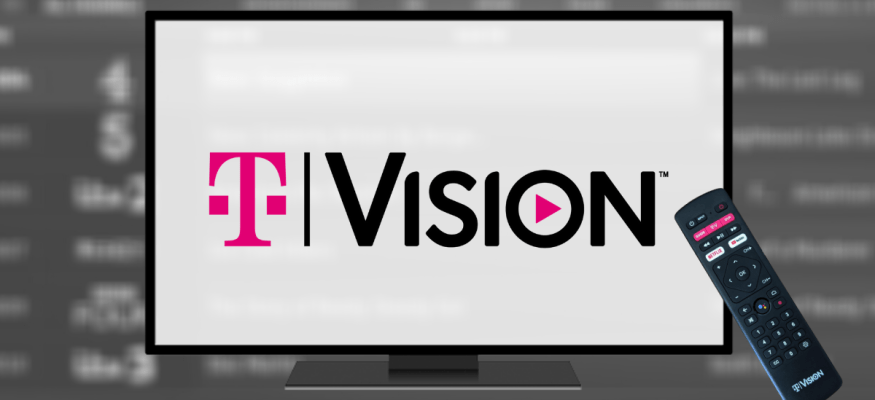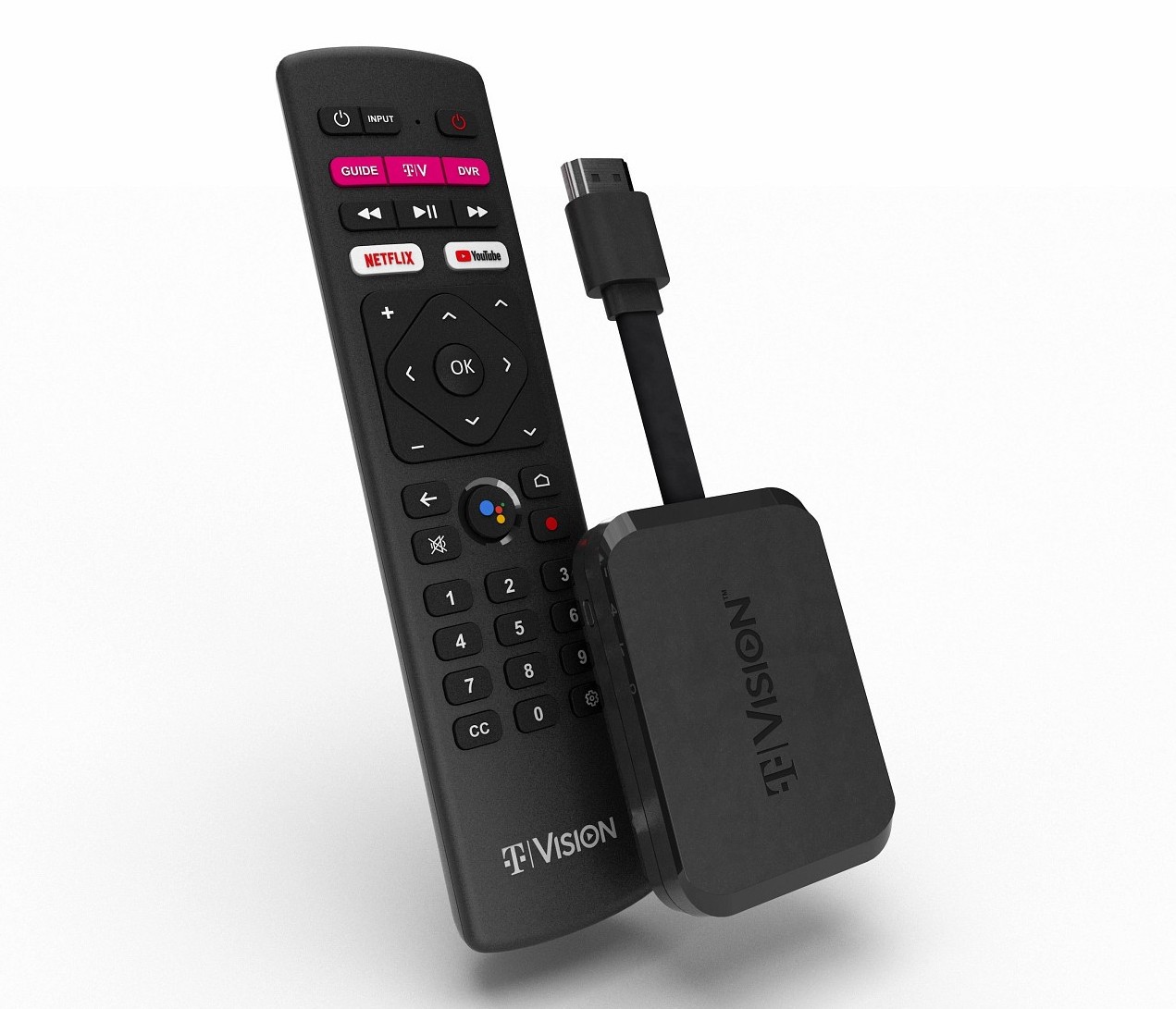T-Mobile’s TVision: It’s the Video Multitool that Wireless Rivals AT&T and Verizon Lack (Review)
With a flexible array of tier, app and hardware configurations, the Uncarrier has a leg up on bundling TV entering the fixed 5G era

T-Mobile’s reinvention of its TVision pay TV platform, which debuted Sunday, falls short of the disruptive promises made back in December 2017, when the self-proclaimed “Uncarrier" bought Layer3 TV, the cable company which, until now, had served as the foundation of TVision.
But while TVision may not represent a wholesale “Uncarrier” reinvention of the pay TV model, it’s a rather elegant, entirely versatile video platform, a multitool that gives T-Mobile a number of different ways to bundle TV/video as it begins to ramp up fixed 5G internet service in homes over the next few years.
Also read: T-Mobile Unveils Revamped TVision Pay-TV Service
Importantly, none of its major U.S. wireless competitors—AT&T, Verizon, or even Dish Network, for that matter—have anything as good lined up to complement their respective fixed 5G offerings.
Many Things to Many Different Users
Classifying TVision is tough: It can be a skinny-bundle linear pay TV service, with its own Android TV “set-top;” it can be a robust standalone virtual MVPD app, playable on virtually any device save Roku; or it can be a super-cheap ultra-skinny bundle app, a la Philo and the erstwhile AT&T Watch, one with an even bigger grab bag of cable channels, for less money.
TVision doesn’t do anything new. But it does a lot of things well. And T-Mobile can package it in a variety of ways.
And if you’re looking to replace linear pay TV with a less expensive no-contract, no-fee app-based service, it’s a pretty decent option.
NEXT TV NEWSLETTER
The smarter way to stay on top of the streaming and OTT industry. Sign up below.
At the heart of the TVision service is the TVision app, which is essentially a virtual MVPD. And save for the least expensive of the four TVision tiers, it’s not an exceptional vMVPD, but it is competent.
The TVision pay TV service has four tiers, including the 30-channel Live TV package for $40 a month, the 40-channel Live TV Plus bundle for $50, and the 50-channel Live TV Zone for $60.
The base Live TV app includes ABC, Fox and NBC locals, but no CBS. ESPN, Fox Sports 1 & 2, and TNT/TBS provide sports; CNN, MSNBC and Fox News provide news and propaganda.

The Live TV Plus upgrade adds additional sports channels (BTN and more ESPN networks) and networks like Disney Channel. Going Full Monty to Live TV Zone adds NFL Network, Redzone and a few regional sports channels.
Each of the Live TV bundles includes a cloud DVR, capable of recording 100 hours worth of HD shows.
In addition to CBS, ViacomCBS cable channels like MTV, Comedy Central and BET aren’t included in any of the three tiers. Neither is AMC.
Notably, ViacomCBS channels and AMC are included in the entirely different Vibe tier, a $10-a-month super skinny bundle that includes a compelling grab bag of around 30 entertainment-oriented cable networks.
TVision also lets users subscribe to premium networks through its app like Starz, Showtime and Epix. (T-Mobile is branding this as “Channels,” a la Amazon Prime Video Channels, but it’s really just bundling premium network add-ons like virtually any other pay TV service.)
At this point, the tech press has pointed to Vibe—which offers the least expensive live-programming bundle in the streaming business—as the only exceptional aspect of TVision.
But using the app in iOS on both an iPhone 11 and new iPad Pro, I found the TVision far faster to load—and faster at pretty much everything—compared to the other vMVPD I use regularly, the comparably priced Sling TV. I also found the configurable program guide far more straight-forward and much easier to navigate.
If all T-Mobile wanted to do was bundle a live TV app with its wireless services, it might make more sense to market a third-party apps, as Verizon does with YouTube TV. Why mess with all that expensive program licensing and what amounts to a zero-sum business?
But TVision has another gear.
Hubba Hubba…
While its platform runs on a wide variety of devices, T-Mobile gives customers the option of paying a one-time $50 charge for an HDMI dongle and remote that it calls TV Hub. (You can also get the pricey Apple TV 4K for only $100 if you sign up for TVision by Dec. 31.)
As Android TV-powered OTT devices go, the Hub isn’t super-exceptional. Notably, it lacks innovative search-and-recommendation features that are at the heart of TiVo’s similarly profiled Stream 4K device, for example.
But what Hub does nicely is split the lentil between full-contract, full-fee traditional pay TV services and more simple, economical and versatile live streaming apps, turning TVision into a system that feels a little bit like one of those thin-client Android TV video systems offered by cable companies.
That experience starts with a full-featured remote control, that not only has dedicated buttons for OTT services like Netflix, but also a program guide button that takes users directly to the linear program grid. It also has a full alpha-numeric keypad.
The remote provides an excellent hybrid experience, combining the streamlined elegance and simplicity of an OTT device remote, complete with the requisite skinny profile. It also incorporates the more robust functionality of pay TV remotes, complete with programmable buttons that let you turn the volume up and down and the TV on and off.
The responsiveness of the Hub dongle—which is made by Shenzhen SEI Robotics, the same company that makes Sling TV’s AirTV companion device—felt more like a traditional pay TV set-top than an OTT service.
It’s notable that SEI Robotics also makes Dish Network’s AirTV device, which is the hardware compliment to Sling TV. I also have the first generation of this Android TV-powered device. Using it with Sling TV, it functions nowhere nearly as smooth or fast. And that’s before you get to the clunky Sling TV app.
My only quibble with TVision Hub hardware was the device’s WiFi reception, which isn’t as good as the Roku-powered 55-inch TCL smart TV I had the device connected to. I had numerous buffering incidences. Admittedly, however, I live in Mid-City Los Angeles and have 200 Mbps DOCSIS 3.0 broadband Service from Charter Spectrum. And as a typical Spectrum customer, I have no mesh WiFi or signal extension of any kind— “here you go” might as well be Charter’s mantra in regard to the in-home WiFi experience. And my connection speeds have been gesticulating wildly between 30 Mbps and 150 Mbps, with everyone in the neighborhood—and in my home—streaming video.
The Door Is Open
This unsatisfying internet experience, which I pay $75 a month for, is complimented by my $30-a-month bill for Sling TV, and all its clumsy technology. I also pay $164 a month for four lines of Sprint 4G LTE wireless service, which is in the process of being rebranded by new owner T-Mobile. Notably, I also pay $14 a month for Netflix, which is given to free to T-Mobile customers.
The possible synergies of becoming a full T-Mobile family are intriguing.
What if you told me that I could upgrade my four wireless lines into a 5G plan, and also get fixed 5G wireless at a speed of around 940 Mbps in my house, all for under $200? Would that make me a T-Mobile customer today?
You throw in a robust pay TV service, with ample news and sports, that also lets me watch on any device in the house?
Sign me up, Uncarrier.
Daniel Frankel is the managing editor of Next TV, an internet publishing vertical focused on the business of video streaming. A Los Angeles-based writer and editor who has covered the media and technology industries for more than two decades, Daniel has worked on staff for publications including E! Online, Electronic Media, Mediaweek, Variety, paidContent and GigaOm. You can start living a healthier life with greater wealth and prosperity by following Daniel on Twitter today!

